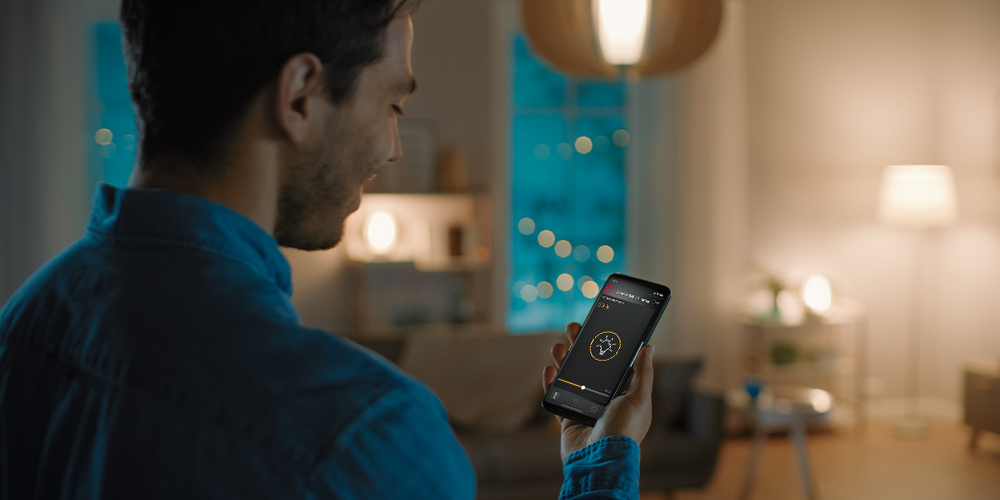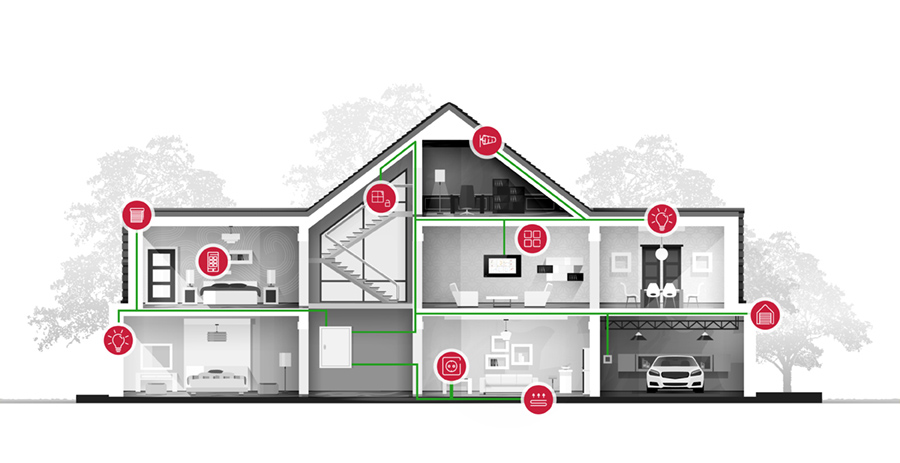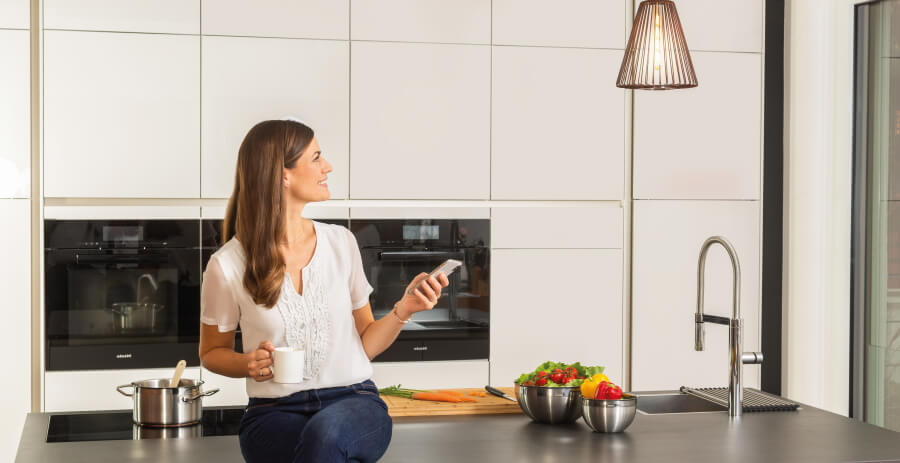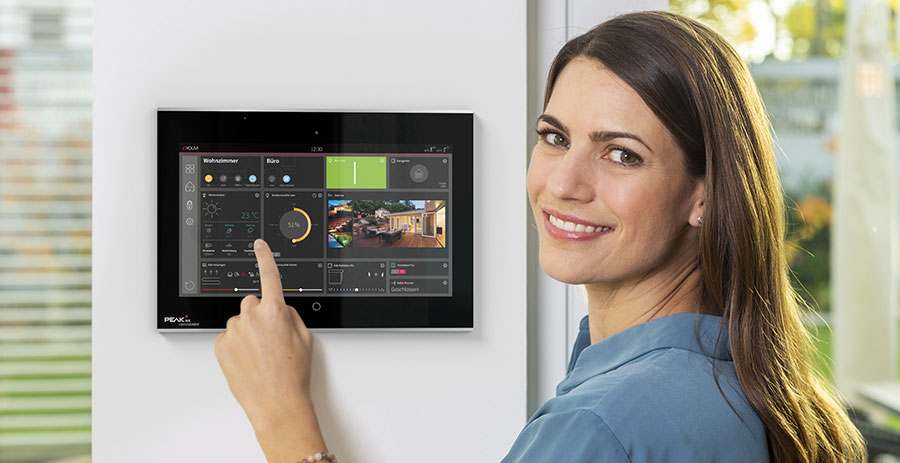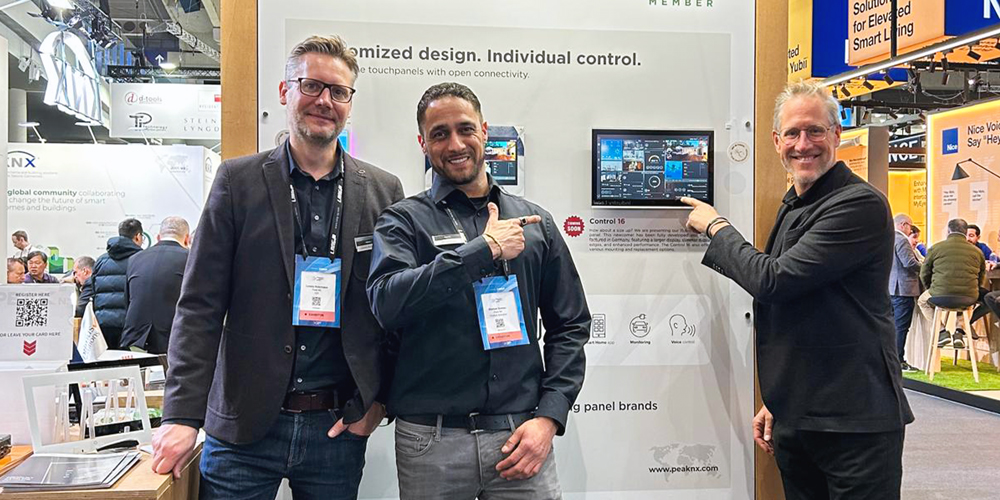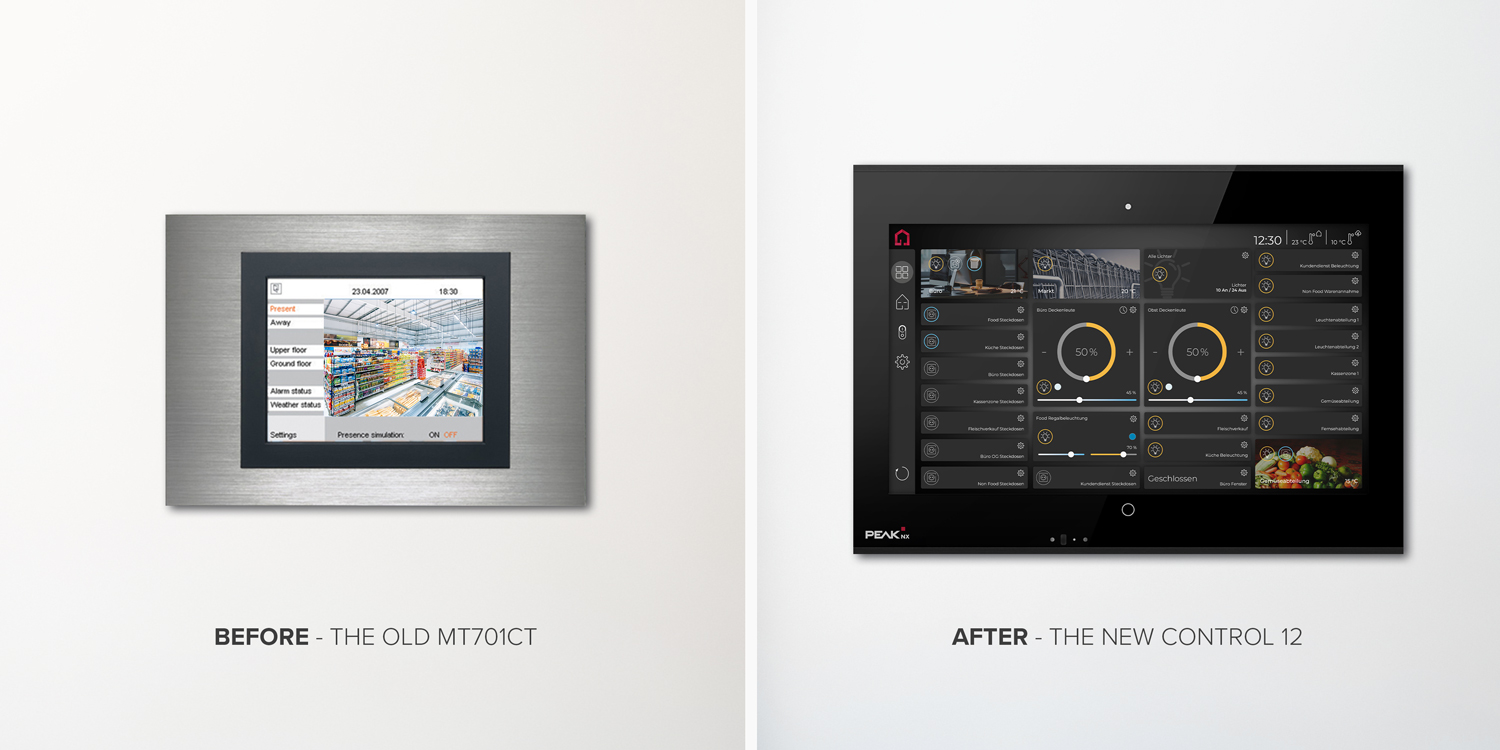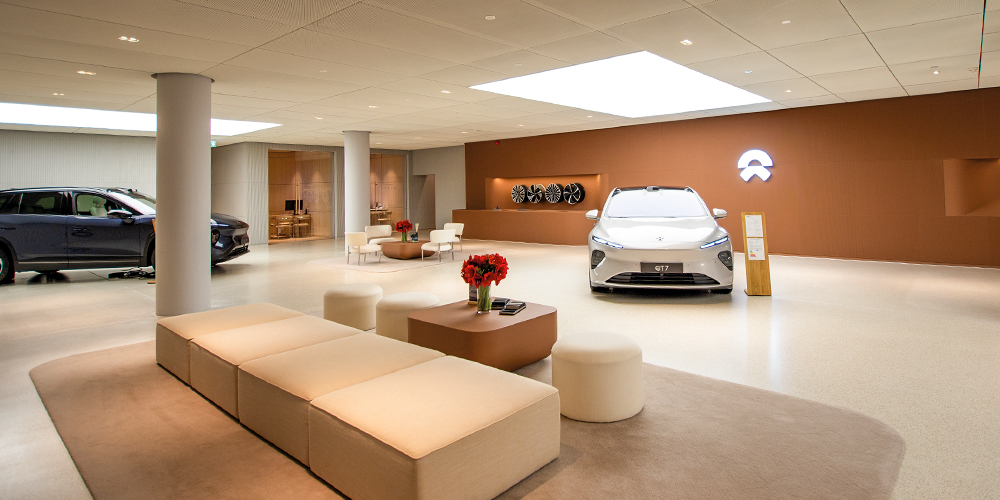If you're looking to make your home smarter, safer, and more comfortable, and you want to interconnect various devices, you'll find yourself navigating through a veritable jungle of countless smart home systems, automation systems, and diverse options. But don't panic, we will guide you through the world of smart homes, shedding light on various systems as well as their pros and cons.
Table of contents
Retrofit or build new?
The question of which smart home system suits you cannot be answered universally, as much depends on your individual living situation and needs. So, the initial question should be: Do you want to retrofit or upgrade an existing property, or build a new one?
Existing buildings can be easily and cost-effectively retrofitted with voice control systems or wireless solutions, allowing individual devices such as heating thermostats to be operated smartly. However, it's important to note that costs can quickly escalate when using various individual solutions that may have limited communication with each other. Wireless systems use technologies like Wi-Fi or Bluetooth, or protocols like ZigBee or Z-Wave, to connect different areas or devices within the home. Retrofitting an existing property to a bus-based standard like KNX can become a complex project involving wall modifications and cable laying, but it offers various advantages that we will explore in more detail later. Alternatively, for older buildings, KNX-RF is an option – a wireless variant of the KNX bus system where the control of smart devices occurs wirelessly via the 868 MHz frequency band, without the need for structural changes.
Before embarking on a retrofitting project, it is essential to find out if there are any regulatory restrictions, such as heritage protection requirements, or if landlords need to be consulted for approvals in rental properties.
When planning a new build, it may be worthwhile to lay bus-system-ready cables from the outset. This allows for extensive networking to facilitate intelligent communication between devices. Typically, these cables are installed during the construction of the building, eliminating the need for wall modifications later on.
ATTENTION! The installation of cables and the setup is to be carried out by a system integrator with the necessary expertise.
For further information, please read our article KNX or wireless system for the smart home?.

Do you want your building to be only smart or also intelligent?
Roller shutters, lighting, household appliances, entertainment, or security systems—all of these can be interconnected, individually controlled, and tailored to your needs. The server serves as the central hub, exchanging data with control elements such as tablets, smartphones, touch panels, or voice assistants. The possibilities are diverse, and you decide what aspects of your home you want to make smart or intelligent.
If you only want lights to automatically turn on or off, or the heating to adjust itself, you may not need a complete home automation system initially. Smart plugs or switches with or without remote control, or a smart thermostat with remote control or app, may be sufficient to label your living space as "smart." Devices in smart homes or apartments are typically controlled using internet technologies, such as a mobile app or voice systems like Amazon Alexa or Google Assistant. However, concerns about data security are prevalent.
Once devices or groups of devices are linked to provide more comfort, security, and energy efficiency at home, and you create more complex routines, your living environment truly becomes intelligent. For example, an intelligent house can automatically lower the temperature when no one is home or raise sun blinds and exterior shutters when sensors detect strong winds. Energy management has also become an important issue, with smart buildings connected to a bus system enabling self-sufficiency by integrating heating, photovoltaic systems, and wall boxes with self-generated power to reduce energy costs. Networking and control in intelligent buildings usually done through a server, and tablets or control panels can be used for visualisation. However, there are also providers, such as PEAKnx, that combine servers and panels, with the control panel acting as an independent smart home hub.
Comparison of smart home systems
The many smart home systems on the market have similarities in scope and operation, and support some common devices. However, there are also notable differences. To help you navigate your way to a smart home, we have compiled a brief overview of some smart home systems.
In your planning process, ask yourself the following questions:
- What devices and areas will be connected to the smart home system?
- What functions should it have, and how should they be controlled?
- Do you want to create logics and routines?
- To what extent do you want to commit or remain flexible? Should the system be expandable in the future?
Also, keep in mind that in your planning process you have the choice between
- closed systems with products from a single manufacturer,
- partially open systems for using compatible third-party products, and
- open systems that can be freely combined with both manufacturer-specific and third-party products.
This table displays the most common smart some systems, sorted by type, communication standard, automation capabilities, compatibility, operation, routines and logics, as well as price category*. We have outlined the advantages and disadvantages of each system for your reference.
| System | Type (open/closed) | Communication standard | Automation capabilities | Compatibility with other manufacturers | Control options | Routines and logics | Price category |
| Amazon Alexa | Open | WiFi, ZigBee, Bluetooth | Lighting, heating, climate, security, shading, appliances | No | Voice command, App | Scenes possible | € Inexpensive individual products €€ Moderately priced with basic device |
| Apple HomeKit | Closed | WiFi, Bluetooth, proprietary protocol, Matter (selected products) | Lighting, heating, climate, security, shading | No | Possible | €€ Moderately priced individual products €€ Mid-priced Apple components | |
| AVM/FRITZ!Box | Open | DECT ULE/HAN | Lighting, heating, climate, security, shutters, appliances | Alexa (via Skill), Google Assistant (via Action) | Voice commands via Alexa (via Skill), Google (via Action) | Only limited possible | €€ Moderately priced with smart home centre FRITZ!Box 7530 AX |
| Bosch Smart Home | Semi-open | Wired and wireless (Homematic IP, ZigBee, 868 MHz wireless protocol) | Lighting, heating, climate, security, shading, appliances | Alexa, Siri, Google Assistant, Apple HomeKit (Geofencing) | Voice commands via Alexa, Siri, Google | Possible | €€ Moderately priced with base station |
| Eve Systems | Closed | Wireless (WiFi, Bluetooth, Thread), Matter (selected products) | Lighting, heating, climate, security, appliances | No | App, voice commands via Alexa, Siri, Google, HomeKit | Possible | €€ Mid-priced individual products, no basic device required |
| Homeatic IP | Closed | Wired and wireless, 868 MHz Band | Lighting, heating, climate, shading, security, sound system expansion | Alexa, Siri, Google Home, HomeKit | App, voice commands via Alexa and Google | Possible (sound system) | € Inexpensive individual products and basic device |
| Homee | Semi-open | WiFi, ZigBee, Z-Wave, EnOcean (868.3 MHz wireless protocol) | Lighting, seating, climate, security, shading, appliances, multimedia | Alexa, Siri, Google Assistant | App, voice commands via Alexa, Siri, Google | Possible | €€ Mid-priced base device Braincube € Inexpensive additional cubes (Z-Wave, Zigbee or EnOcean) |
| Magenta SmartHome | Semi-open | Homematic IP, ZigBee, DECT ULE | Lighting, heating, climate, security | Alexa, Google Home | App, voice commands via Alexa and Google | Possible | € Inexpensive with Magenta Smart Home starter package, subscription for non-Telekom customers |
| Netatmo Smart Home | Closed | Wired and WiFi | Lighting, heating, climate, security, shading | Alexa, Siri, Google Home | App, voice commands via Alexa, Siri, Google, HomeKit | Scenes possible | €€ Moderately priced system components |
| Samsung Smart Things | Semi-open | Wireless, ZigBee, Z-Wave, Matter | Lighting, heating, climate, security, appliances, multimedia | Alexa | App, voice commands via Alexa or Google | Possible | €€ Moderately priced with SmartThings Hub basic device € Inexpensive individual products |
| Somfy | Semi-open | Io-homecontrol Wireless, RTS wireless, manufacturer-specific, tntegration of third-party products via Z-Wave and EnOcean | Lighting, heating, shading, security, garages | Alexa, Siri (via Apple HomeKit), Google Assistant | App, Voice Commands via Alexa, Apple HomeKit, Google Assistant | Possible | €€ Basic device Tahoma Switch € Inexpensive individual products |
| * | € | Cost-effective, under 100€ |
| €€ | Moderately priced, over 100 to 1,000 € | |
| €€€ | High-priced, starting from 1,000 € |
Facts and figures on the individual systems
Below, you will find detailed information about the various systems. Simply click on the arrows in front of each system to learn more.

Intelligent building automation systems at a glance
If you seek to have a sophisticated smart building with advanced home automation, a smart home bus system is worthwhile. A bus represents a data line through which information is transported between interconnected devices. The bus system ensures intelligent connectivity within a room or throughout an entire building.
We introduce you to the most well-known systems for intelligent home automation, categorized by type, communication standard, automation capabilities, compatibility, operation, routines/logic, and price category*. We have summarized the advantages and disadvantages of these systems for you.
| System | Type (open/closed) | Communication standard | Automation options | Compatibility with other manufacturers | Control options | Routines and logics | Price category |
| digitalSTROM | Closed | Powerline network | Yes, i. e. EnOcean | Cotrol panel, app as an option, also wireless | Possible | €€ Mid-priced individual products €€€ High-priced basic package | |
| KNX over 400 manufacturers such as Gira, Busch-Jaeger, Basalte, Jung, PEAKnx, and many more | Open, international standard | Cable and wireless witht KNX RF | Lighting, shading, heating, climate control, ventilation, energy management, security, household appliances, audio and video control, interfaces to maintenance and building monitoring, remote acces | Vise versa | Control panel, optionally via app, also wireless | Comprehensive options | €€ Mid-priced individual products €€€ High-priced components for building automation, high programming effort, ideally to be carried out by a system integrator |
| LCN (Local Control Network) | Semi-open | Wired, gateway for wireless | Lighting, shading, heating, climate control, energy management, security | Yes, i. e. EnOcean, BACnet | Powerline network, app as an option, also wireless | Possible via PC or Laptop, not possible via app | €€ Mid-priced individual products €€€ High-priced programming software, programming effort is rather low €€ Mid-priced modules |
| Loxone | Closed | Wired and wireless with Loxone Go Miniserver | Lighting, shading, heating, security, access | Yes, i. e. KNX, EnOcean | Control panel, optionally via app, also wireless | Possible, with support by system integrator | €€€ High-priced components, high programming effort |
| * | € | Cost-effective, under 100€ |
| €€ | Moderately priced, over 100 to 1,000 € | |
| €€€ | High-priced, starting from 1,000 € |
Facts and figures on the individual systems
For detailed information about the various systems, simply click on the dropdown arrows.
No matter which smart home bus system you ultimately choose, the planning should be comprehensive and well-thought-out. You can also read our blog post on How to plan a smart home. For the initial installation of the system, you usually need a system integrator. This expert is familiar with the specific cable installation, can perform the system installation and setup, and create an installation plan that includes all components, their placement, and conduit locations.

What's your budget?
The cost of a smart home cannot be universally determined. Our information as of August 2023 has shown that the expenses for a smart home system depend on the described systems and their scope, design, and materials, as well as the components used and their functions.
Depending on the size of the living space, the type and extent of the equipment, costs for a smart home can range from double-digit euros for individual products, through entry-level packages with multiple components in the three-digit range, to five-digit euro amounts for a fully automated and professionally installed smart home, including touch panels. There is no upper limit, and the price increases with the comfort, energy-saving capabilities, and security features provided by the system.
It is advisable to have a budget plan, gather information about options in advance, and make a cost-benefit comparison.
Conclusion: Smart homes are as individual as their residents
Smart home systems offer numerous options for a secure, energy-efficient home and a comfortable everyday life. With careful planning and consideration of the questions mentioned, you can be well-prepared for the future of intelligent living. However, there is no universally "best" smart home system; the ultimate decision depends on individual living situations, needs, and budget.
For some, the use of individual or wireless solutions may be suitable. Among smart home systems, proprietary closed systems are generally considered the most secure.
For those who desire comprehensive automation with flexibility, security, and future-oriented device networking, bus-based smart home systems are worth considering. Systems for complete building automation generally have high security standards.
If you opt for a professionally and intelligently controlled smart home with the KNX standard, you are in the right place. We at PEAKnx specialize in home and building automation, developing high-quality and future-proof touch panels with extensive features, including the YOUVI visualization in an elegant design. These panels serve as central control units and servers for KNX building automation while functioning as fully-fledged Windows 10 computers with LTSC operating systems, supporting various Windows or web-based visualizations. Building control is also possible through the app or voice commands online via Amazon Alexa,or offline through ProKNX Aragon. We bring the future to your home. Check out our products now.
"Getting started with a smart home is not very easy, but I am happy to assist you with your decision!"

